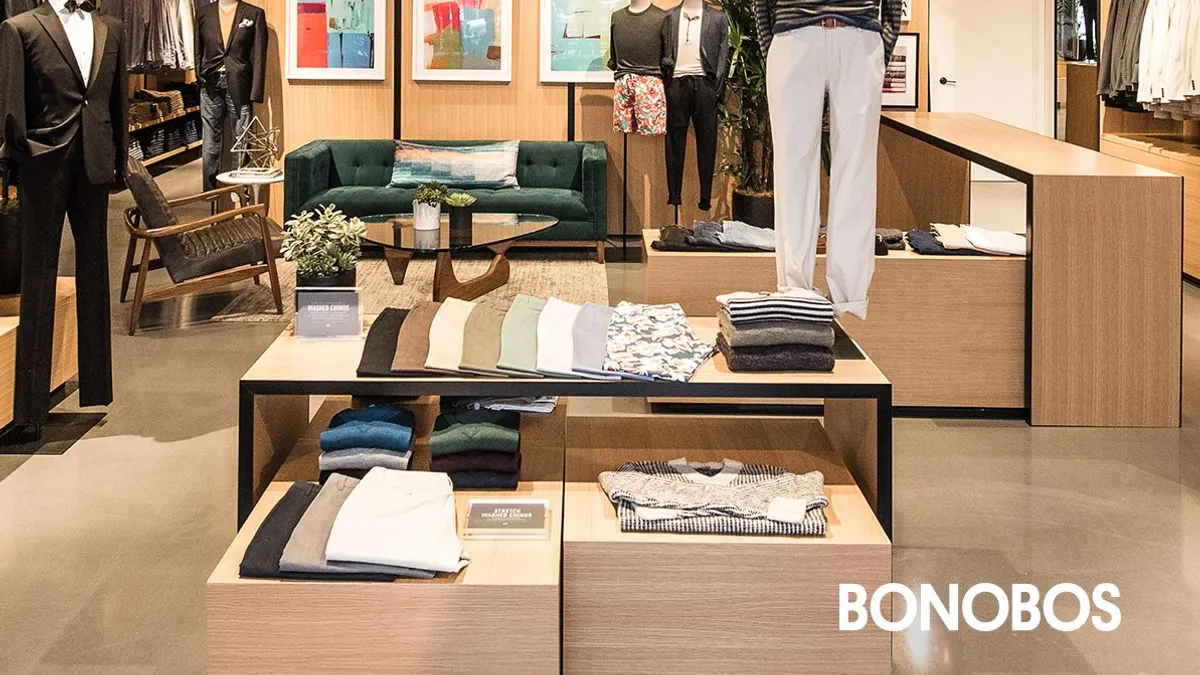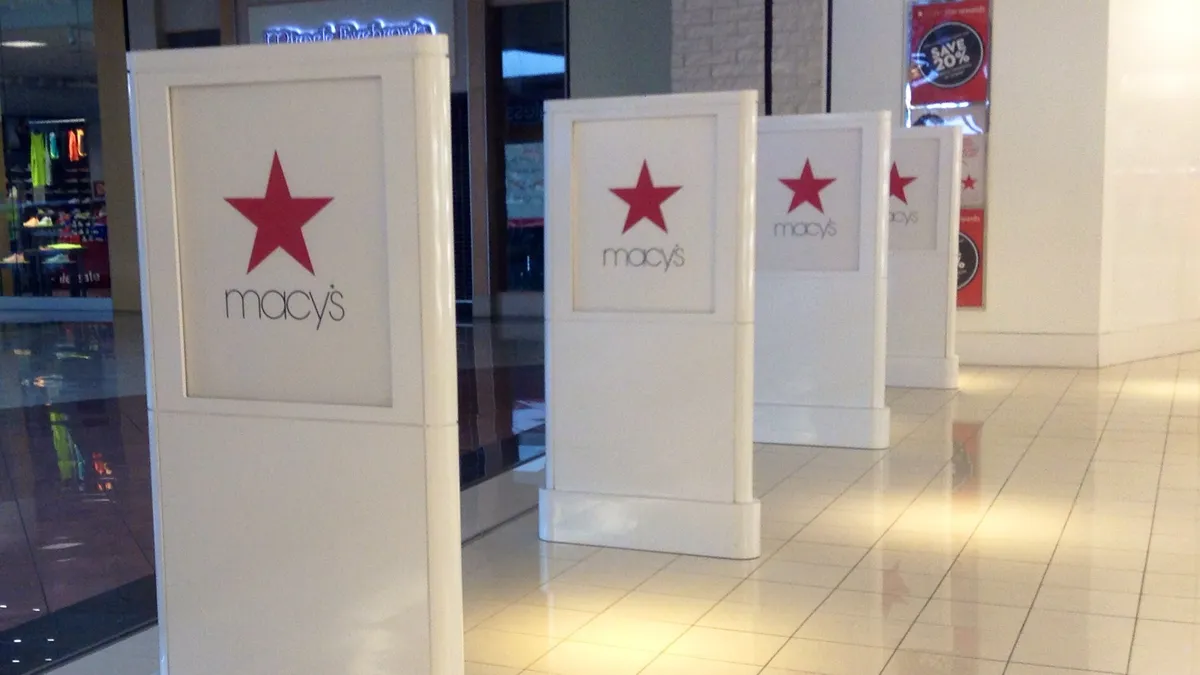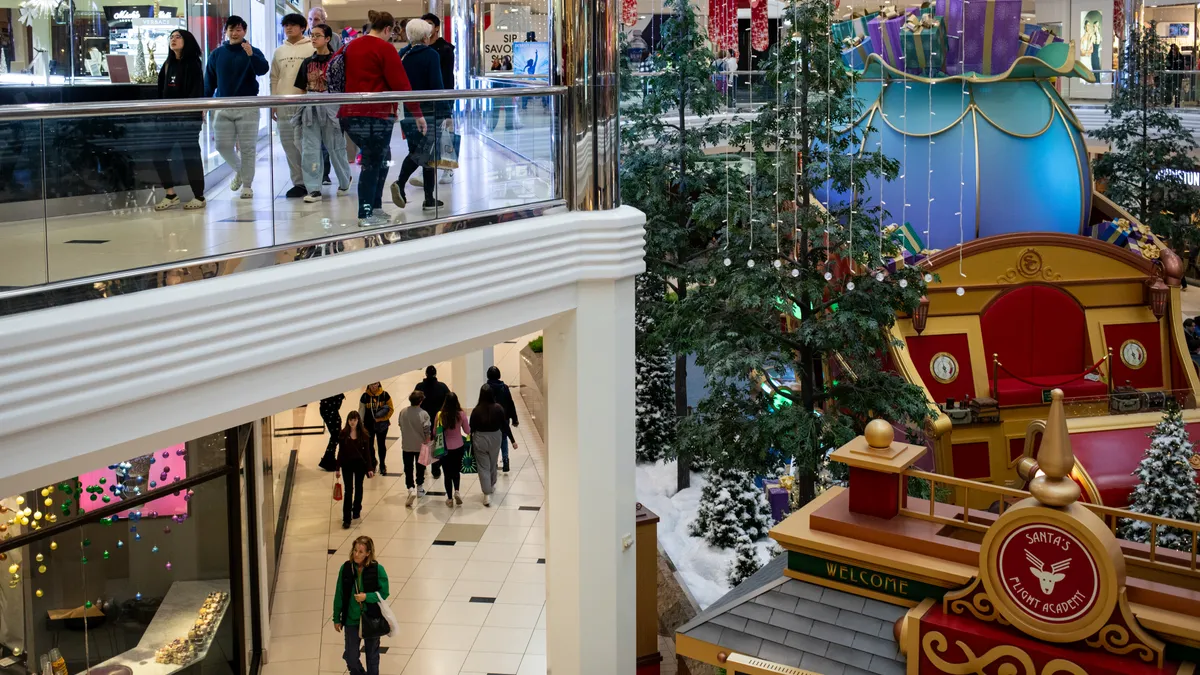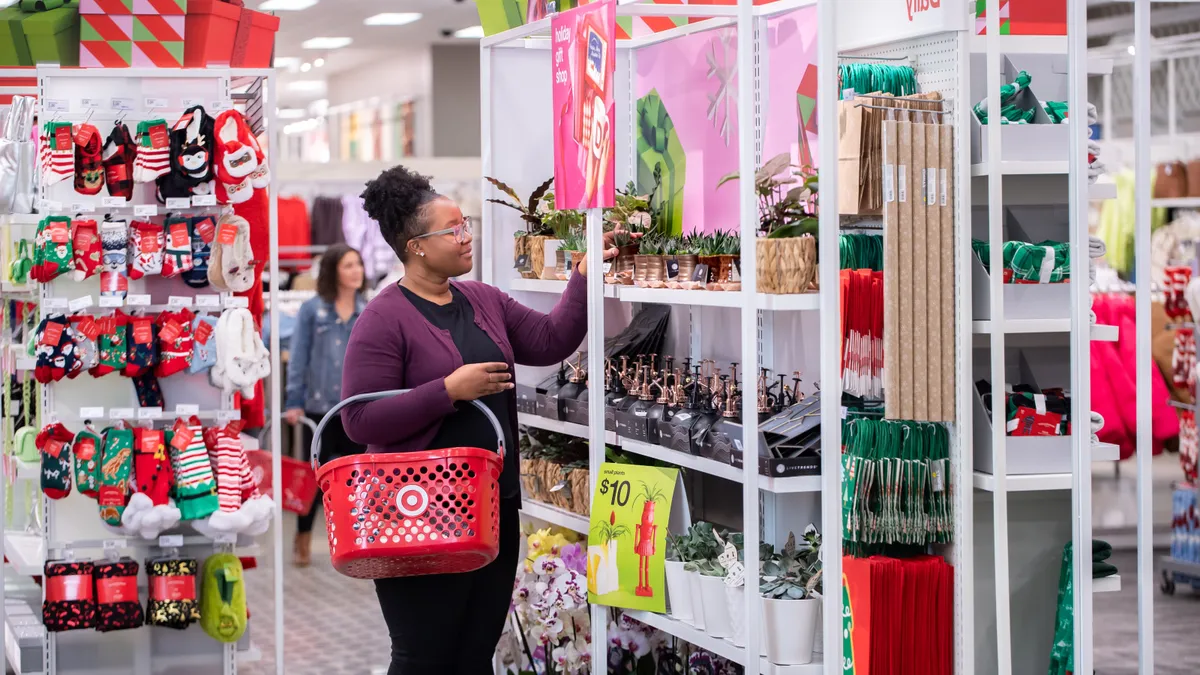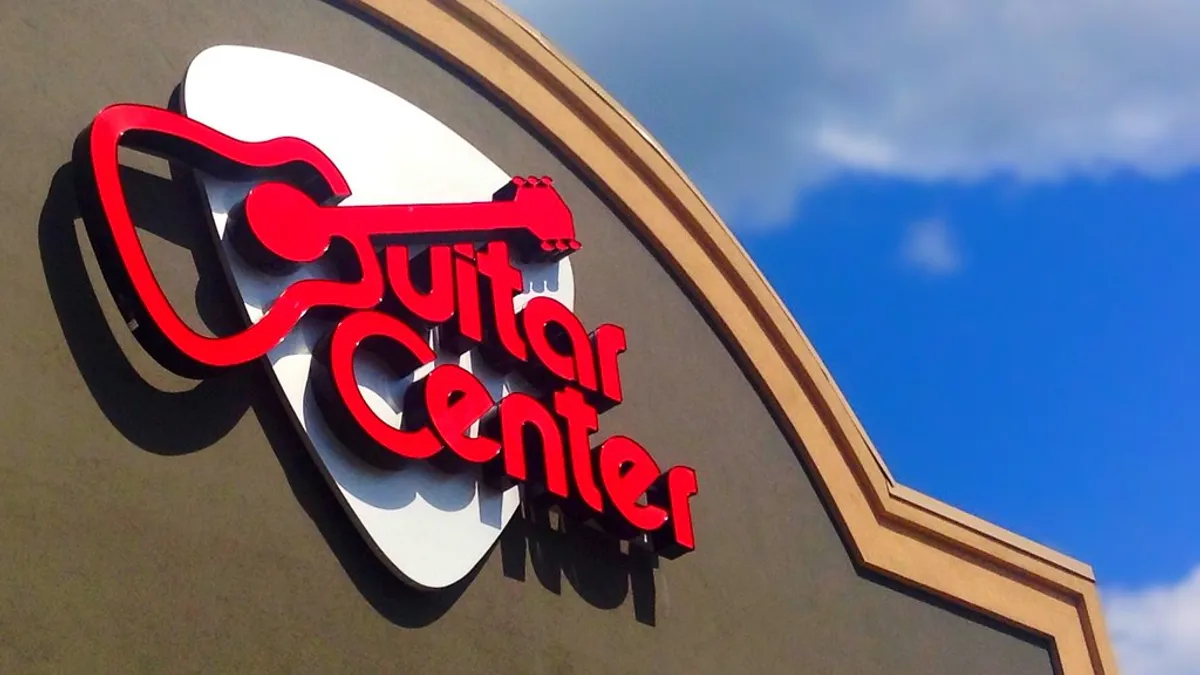Retail is going through a monumental transition period, to say the least.
Giants of industry, such as Macy’s and J.C. Penney, are struggling to find focus and customers, while formerly pure-play e-commerce newcomers such as Bonobos and MM. LaFleur have increasingly branched out into brick-and-mortar locations. Even Wal-Mart has begun exploring new ideas with its tech incubator, Store No. 8. It's also reportedly in advanced talks to acquire Bonobos for about $300 million. In addition, Modcloth, which was recently purchased by Wal-Mart-owned Jet.com, opened its first permanent showroom in Austin, TX in January.
But many of these new stores don’t look like the retail spaces of the past, nor do they function like traditional brick-and-mortar stores. One of the more intriguing ideas beginning to trend in fashion circles is the showroom.
Like automotive, mattress and furniture showrooms, the concept stores offer shoppers the ability to test, try and touch the merchandise, then opt for home delivery instead of carry-out. It’s an appealing idea for stores looking for a way to reduce square footage, certainly. But not all stores can make the idea work — and not all customers are ready to change the way they shop.
What is a showroom?
According to analysts, showrooms may be the logical next evolutionary step for retailing, in part because many consumers are already using stores as showrooms.
“Showrooms is another step to better cater to consumer needs,” Andres Mendoza-Pena, a partner in the retail practice of global strategy and management consulting firm A.T. Kearney, told Retail Dive. He describes a apparel retail showroom as a place designed to allow customers to try and test products in their journey to transact, and allow them to get to know the product better, with the understanding that the final purchase transaction will take place online. “Consumers prefer to engage with brands online for research and transactions,” he said. “But even when they transact online, two-thirds of the time they have used a store prior to or after the purchase.”
Customers often start their shopping journeys online, go to a store to try something on, then return home to place the order online, he said. “But there are also purchases you might buy online, but then exchange or return in a store. So customers might transact online and then use the physical store for other parts of their journey.”
"Customers can take nothing home. So a showroom has to offer a compelling and high-touch experience."

Andres Mendoza-Pena
Partner in the retail practice of global strategy at A.T. Kearney
The concept of showrooming is new to apparel retailing, but it’s not new to retail in general. Furniture stores such as Restoration Hardware have been exploring the idea for years, said Nick Hodson, a principal with global strategy consultancy Strategy&, part of the PwC network. “Restoration Hardware came from traditional retail, and a substantial portion of their business is furniture,” he told Retail Dive. “And that’s how high-end furniture has always been done.”
When the idea is translated to apparel retail, it morphs to suit its merchandise and additionally has to offset customers’ existing expectations with regards to traditional shopping experiences. “A showroom does not stock inventory for sale,” Hodson said. “Customers can take nothing home. So a showroom has to offer a compelling and high-touch experience, because otherwise it would it would be pretty unsatisfactory. For instance, a Wal-Mart would be pretty uncompelling if you could only look.”
To that end, showrooms have to create experiential environments that will fulfill customers in new and innovative ways.
The benefits of showrooms
While it’s obvious why a showroom is well-suited to a retailer dealing with high-end furniture, cars or other large high-ticket items, understanding how the concept translates to apparel retail requires more imagination. Some types of apparel stores are better suited to the idea than others.
“The stores that benefit the most from the showroom concept are online retailers and new brands,” Mendoza-Pena said. “The online-only players, because it’s a way for them to increase awareness of their brand and increase the trust of the customer base. Our research shows that online-only players that open a store see an increase in sales of 5 to 8 times. That’s a lot.”
Online-native players also see showrooms as a way to help them build trust with their customers. “Online brands need to make sure that customers are comfortable with the colors and the sizes,” he said. “Technically, a retailer doesn’t need to carry a significant amount of inventory in that showroom. Just a full spectrum of products and colors and sizes.”
"Where you used to have one 5,000 square foot store, you could maybe have three 500 square foot stores."

Lee Peterson
Executive VP of Brand, Strategy and Design at WD Partners
The concept of showrooming is also likely to appeal more to some customers more than others, Lee Peterson, executive vice president, Brand, Strategy and Design, at WD Partners, a customer experience company specializing global food and retail brands based in Columbus, OH, told Retail Dive. In a recent consumer survey his company conducted, he found that younger customers were much more amenable to the experience than older ones.
“With 2,500 consumers in the U.S., we described a showroom store,” he says. “We consider a score of 40% something that’s worth testing. Overall, showroom scores were about 45% at ‘intent to purchase,’ and ‘appeal’ was a little lower. But when we separated out Millennials, showrooms scored 55%, versus only 28% with baby boomers. Young people would want showroom stores, and would drive purchase.”
Millennials aren’t the only demographic that might find a showroom appealing. “If I’m a guy and I’m fairly constant in fitness and weight, I can go to Brooks Brothers and try on my suit and chinos and then just reorder, and I don’t have to go to the store anymore,” Hodson said. “So then all my transactions might be online. Arguably, I might be willing to make an annual trip to a showroom and then place my orders online.”
If brands can make a showroom small enough, they might be able to open more doors and thereby reach new customers in underserved markets, he said. “If a space has a low minimum efficient scale (MES), you could build lots of them,” he said. “So where you used to have one 5,000 square foot store, you could maybe have three 500 square foot stores. I don’t know what those economics look like. But when it’s all about inventory a big part of that is scale. In theory, you might end up with five 500-square-foot stores, then you’re on every corner.”
For stores that can make the concept work, Peterson said there is a lot of money to be saved — and made. He points particularly to the profitability of Bonobos, which he says does an average of $3,000 per square foot in their showroom stores. Peterson contrasts that figure with The Gap, which, according to Peterson, is averaging approximately $450 per square foot. This kind of profit margin is precisely what has been compelling some stores to consider making the change.
The challenges of showrooms
Not all retailers are well-suited to showrooming, though.
“I don’t know of a traditional mall retailer who has gone in this direction yet,” Hodson said, explaining that to see a real benefit, stores need to weigh the costs of inventory management, square footage and running a supply chain. Making the change from traditional retail to showrooming is wrenching, he said, and it only makes sense if all three elements can be optimized.
“Today you have a supply chain that’s designed to deliver product to stores and another one that’s designed to flow product to houses,” he said. “If all I have is showrooms, then I don’t need a supply chain to send product to stores. If I open a single showroom, I’m not able to eliminate a two-store supply chain. So the business case to convert is scary, and you don’t get the supply chain benefit unless you do it all. So I’d expect to see The Gap start to experiment with showrooms, and take one store and convert it to showroom, and see if the dogs like dog food. Do the customers still come in? What kind of productivity do I get? What kind of economics are there? Maybe you don’t do the entire network. Maybe you have a glorious flagship store in New York City, but you convert the entire Midwest to showrooms.”
"[Zara] depends on discovery and lots of product to generate traffic, and the benefit they’d see from a showroom is fairly minimal."

Nick Hodson
Principal with Strategy&
Some stores may not see any benefits at all.
“Take Zara,” says Hodson. “Zara’s fast-fashion capability means they have very little markdown as it is. They depend on discovery and lots of product to generate traffic, and the benefit they’d see from a showroom is fairly minimal. If you know you’re going to sell it, as opposed to crossing your fingers and hoping the coin comes up heads, you can afford to price it lower to begin with.”
But retailers like Gap or J. Crew has less certainty of sale, Hodson said, meaning the initial markup has to be higher to compensate for all the misses. “If [Gap or J. Crew] could manage their inventory through showrooming, they could price lower,” he said. “So if I were advising Zara, I would say, ‘Keep doing what you’re doing.’ Which is why Zara is lagging behind Gap in online penetration. The stores are very profitable, and if it ain’t broke don’t fix it. It’s not because they’re great inventory managers. They’re just great with product.”
Discount stores such as TJ Maxx and Ross are also disincentivized from using the online model or the showroom model, because their merchandise is already marked down.
“The people most likely to showroom are mid-market basic fashion brands,” Hodson said, pointing to the fashion price matrix as a good indicator of how to determine where a brand falls in terms of market. “Fashion is on the vertical and price is on the horizontal,” he said. “So, top right corner is Gucci, which is high fashion and really expensive. Bottom right is Brooks Brothers, which is expensive but not fashionable. Bottom left is Wal-Mart, which is basic and cheap, and not fashionable. Top left is fashionable and cheap, like Forever 21. So in the middle is Target, which is northeast of Wal-Mart, and The Gap, which is Northeast of Target. Zara is north of Gap and east of F21.”
In principle, the ideal showroom retailer is in the middle of that matrix. “If you’re Brooks Brothers, the benefit is a smaller store, and if I could truly transform my supply chain, that would be a benefit, but I won’t see a markdown,” he explained. That means stores that can only profit from one or two of showroom’s advantages may not see any benefit to adopting the concept.
Then too, stores need to be ready to implement this idea, and they need to have brave leadership. “You have a smaller space, so you’d pay less rent, fewer salespeople,” Peterson said. “But it’s a different kind of logistic. You’re not shipping inventory to the store, and you have to figure that most of the shipping has to be fast, maybe even same-day delivery, so that’s more expensive. And you have to have your online system set up already.”
Not every company is ready to do that. “We were working with [a sporting goods retailer], and we designed a showroom-style store for them,” said Peterson. “The idea was to have it in airports. But then they got chicken-shit, and the idea got watered down.”
Another deterrent is helping the consumer understand the idea. “At AMC theaters, we made a convenience store,” Peterson said. “You could walk into the AMC and self-serve. But we built that, and customers did not know what to do. Training the consumers was the biggest part.”
Rethinking the store network
As changing consumer behavior continues to demand innovation and convenience from the retail industry, apparel retailers need to make a change if they're going to survive.
“Our perspective is that at the end of the day retailers should rethink their store network,” says Mendoza-Pena. “To a large extent, retailers have been thinking of their stores in a cookie-cutter way. But in the future, different stores will have different roles. We’re not saying that all retailers will have only showrooms, but there will be a need for different stores to have different roles.”
For example, in a tourism-heavy area, showrooms won’t likely play a big roles, because tourists want to get home with their purchases. That means large stores with large inventory will need to be available to allow tourists to happily take their items with them.
"How long will it take for traditional retailers to adapt? Retail is not a fast-moving industry, but eventually they will have no choice.”

Andres Mendoza-Pena
Partner in the retail practice of global strategy at A.T. Kearney
However, in more residential and suburban areas, Mendoza-Pena said, there’s no need for these massive stores, and that’s where showrooming might play a more important role. “Let’s take The Gap,” Mendoza-Pena said. “And let’s use the Magnificent Mile in Chicago. They have a large store and there are tourists there purchasing products. Then let’s then take The Gap in Lincoln Park. They don’t need a massive store there. They could have a storefront in Lincoln Park that fulfills online orders, in terms of packaging and shipping and backroom capabilities, and even one that is also a showroom. But they would need to have the backroom capability to fulfill online orders that they don’t have today. Then some other stores will be only showrooms. In general, we believe there will still be a need for distribution centers.”
There will also be a need for experienced and attentive salespeople. Showrooms need to have sales associates who are very good from a consumer perspective, Hodson said.
“They need to be helpful and amusing, and from the retail perspective they have to build a basket and close customers,” he said. “The sales associate is as important or even more in showrooms than in traditional stores.” For new brands and online-only players, salespeople will help bring brands to life, he said, adding that there will also be need, to some extent, to educate the consumer and make them feel comfortable with the showroom concept.
When will showrooms go mainstream?
It may be a while yet before showrooms become common, in part because not all retailers have the foundation or inclination to make the change.
“I think it’s going to happen with the obvious players first, like consumer electronics,” Petersen said. “Even with the success of Bonobos or Warby Parker, it will be years before Wal-Mart or Target will do it.”
But it may not be that long before Gap rolls out showrooms. “The Gap has already tested showroom stores,” he said. “They’re great example of a company that’s closed enough stores now that they’ve leveled off. And the best place to be as a retailer is a fast second. You don’t want to be first. For example, the whole Ron Johnson incident set J.C. Penney back. But you’ll start to see big testing with showroom stores soon.”
Other analysts are more cautious about a timeline. “If we haven’t seen this in the next 18 months, then it’s not a brilliant idea,” Hodson said. “Last Christmas, we saw a wave of closure announcements. I think the consequence of that is — what do we think the CEO of a retail store sweats about? It’s, ‘Should I shut stores?’ Because it’s a big step to shut stores. It’s like shutting down a blast furnace. It takes a lot to start up that again. So I would expect some retailers to try showrooming as they exit stores. Or perhaps they’ll experiment. Store designers will test showrooming in existing 5000-square-foot stores, and they’ll build a wall and demonstrate that you can test the concept as if it’s a 500-square-foot store.”
Regardless of timeline or testing concepts, though, retailing is evolving, and showrooms seem to be a natural next step. “We are scratching the surface of the evolution of retail,” Mendoza-Pena said. “If you rewind, retailing used to be a simple business, because everything would happen within the four walls of the store. That store was driving awareness, and it was a brand ambassador and an exploration playground and a showroom. Customers would test the product, and it was a place to buy product and get some services, and return products. All these roles were intertwined and happening at the same time in the store. Then the internet happened, and we now engage with brands differently. We prefer to transact online, but still we rely on the store for other roles.”
As customers change the way they shop, retail will also have to change, both to accommodate, but also to survive. “Showrooms are going to be a critical element for retailers to engage with consumers,” Mendoza-Pena said.
“The question is, how rapidly will traditional retailers be able to adapt to this emerging concept? Online players don’t have the traditional baggage that prevents them from moving fast, and they can adapt. But retail is not a fast-moving industry, but eventually they will have no choice.”



